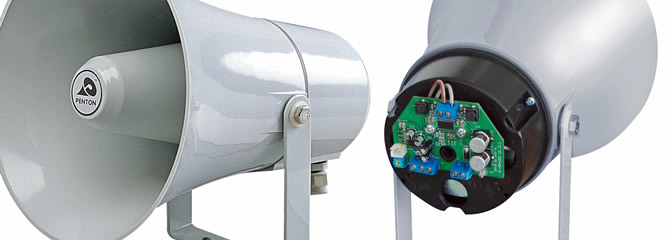

Voice alarms & public address
Voice Alarm systems are recognised as the safest & most efficient way to evacuate people from buildings. Following the detection of a fire, automated messages can control the movement of people, loadings in stairwells and corridors together with reassurance to those who may not need to evacuate at the initial phase. Manual intervention using high priority, strategically located fire microphones or paging terminals can supplement the automated response; confirming the validity and need to leave a building or not.
The voice alarm industry and its products have their roots firmly established in public address systems. The equipment is often similar although the introduction of BS5839: Part 8 & EN54 set specific standards that are required in order to issue a certificate of conformity.
Voice alarms are engineered and installed to higher standards than public address systems as they have to work when needed, especially in an emergency. The additional requirements for VA include monitoring all components that form the complete system. An alternative power supply, normally a battery backup which is capable of supporting the system from fully charged to end point (calculated for the number of hours or days necessary) that is monitored continually and will ensure that during a mains power failure, the system will continue to operate as required.
Studio recorded, clear messages in English or other languages and live announcements to all areas or selected areas / zones enable a controlled and gradual, safe evacuation of a building or facility. Phased evacuation enables particular areas to be evacuated in a dynamic or pre-planned procedure. Usually, areas most at risk (roof, basement or particular high risk areas) are evacuated first whilst surrounding or adjacent zones / areas are placed on alert (a message that warns the occupants of the incident but assures them they are safe to remain where they are). Systems will work automatically but can be overridden by the fire brigade or building security staff when appropriate.
Rack mounted centralised, distributed DAUs (distributed amplifier unit), Adaptive Class D amplifiers which provide both high reliability and high efficiency are the key requirements for voice alarm amplifiers. High efficiency means smaller battery supplies and lower operating temperature. Lower operating temperature means increased reliability. Analogue and IP switching / control equipment, DSP-based audio routers, allowing routing of 4, 12 or 20 audio inputs to any combination of 4, 12 or 20 outputs. In addition to audio routing these units provide full system control and fault reporting functions for rack mount systems.






